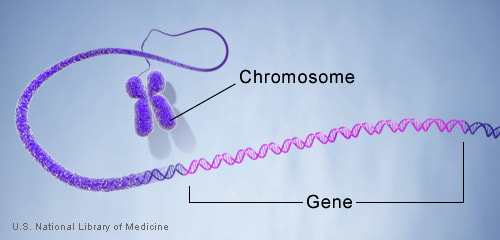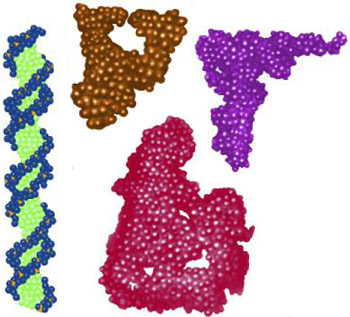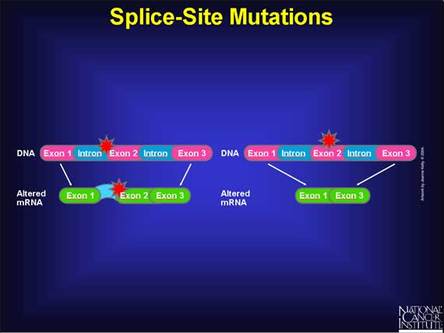
Ever read some posts on Facebook or other places and wondered what on earth they were talking about?
Me too!!
Fear not; now you can confidently wade into the conversation without looking like a complete newbie!
Alleles
Alleles are forms of the same gene with small differences in their sequence of DNA bases. These small differences contribute to each person’s unique physical features.
Autophagy
Autophagy is the condition whereby the cells start to recycle damaged and garbage parts (defects) into basic elements thereby allowing the cells to remodel itself.
Autosomal Recessive

Autosomal recessive is one of several ways that a trait, disorder, or disease can be passed down through families.
An autosomal recessive disorder means two copies of an abnormal gene must be present in order for the disease or trait to develop.
Bilevel positive airway pressure (BiPAP)
BiPAP (also referred to as BPAP) stands for Bilevel Positive Airway Pressure, and is very similar in function and design to a CPAP machine (continuous positive airway pressure).
Cardiac Hypertrophy
Cardiac hypertrophy is the abnormal enlargement, or thickening, of the heart muscle.
Carrier
The term “carrier” is used to describe a person with only one defective copy of the gene. Carriers do not have Pompe disease or experience symptoms, but they “carry” the gene defect and may pass it on to their own children.
Note: It is suspected that carriers CAN experience symptoms.Creatine kinase (CK)
There are three major subtypes of CK based on the site of isolation. CK-BB is commonly isolated from the brain, gastrointestinal tract and the urinary tract. CK-MB is found in heart, while the skeletal muscles and heart are the main sites for the subtype CK-MM.
Reference Values
Males
6-11 years: 150-499 U/L
12-17 years: 94-499 U/L
> or =18 years: 52-336 U/L
Females
6-7 years: 134-391 U/L
8-14 years: 91-391 U/L
15-17 years: 53-269 U/L
> or =18 years: 38-176 U/LReference values have not been established for patients that are less than 6 years of age.
Note: Strenuous exercise or intramuscular injections may cause transient elevation of CK.CRISPR
CRISPR-Cas9 is a unique technology that enables geneticists and medical researchers to edit parts of the genome by removing, adding or altering sections of the DNA sequence.
Enzyme
A conclusive way to confirm a Pompe diagnosis is by measuring the activity of the acid alpha-glucosidase (GAA) enzyme, which is always lower than normal in people with Pompe disease. The test used for this is called an enzyme assay.
An enzyme assay to measure GAA activity can be performed on a variety of samples from a patient's blood, skin cells, or muscle. Blood tests have advantages such as:
- They are not generally painful to the patient, requiring as little as just a few drops of blood obtained by a small prick
- Results are usually available within just a few days (as opposed to several weeks with some other methods)
- Recent updates to the tests have made them very accurate
Enzyme level
All people with Pompe disease have lower than normal GAA activity levels—sometimes even none at all. The exact numbers can range from less than 1% of normal levels (usually found in infants) to up to 40%.
An enzyme assay result of 1-40% of normal GAA levels usually identifies Pompe disease. However, within that range, a particular number cannot predict what kind of symptoms a person will have or how the disease will progress, as there is great variability among patients.
Gene

A gene is the basic physical and functional unit of heredity. Genes, which are made up of DNA, act as instructions to make molecules called proteins. In humans, genes vary in size from a few hundred DNA bases to more than 2 million bases. The Human Genome Project has estimated that humans have between 20,000 and 25,000 genes.
Every person has two copies of each gene, one inherited from each parent. Most genes are the same in all people, but a small number of genes (less than 1 percent of the total) are slightly different between people.
Genotype
Your genotype is your complete heritable genetic identity; it is your unique genome that would be revealed by personal genome sequencing.
Glycogen
Glycogen is a large branched polymer of glucose that serves as a form of energy storage in animals. In humans, glycogen is made and stored in liver and muscle cells. Muscle cell glycogen is broken down into glucose, and liver glycogen is broken down into glucose as a circulating energy source glucose for use by the body. Glycogen is an energy reserve that can be quickly mobilized to meet sudden needs. In liver cells, glycogen can comprise up to 8% of liver weight. In muscles, glycogen is found at lower concentrations, 2% of weight. Small amounts of glycogen are found in the kidneys and lesser amounts in the brain.
Gowers maneuver
Gowers' sign is a medical sign that indicates weakness of the proximal muscles, namely those of the lower limb. The sign describes a patient that has to use their hands and arms to "walk" up their own body from a squattingposition due to lack of hip and thigh muscle strength.
Hypertrophy
Muscle hypertrophy involves an increase in size of skeletal muscle through a growth in size of its component cells. Two factors contribute to hypertrophy: sarcoplasmic hypertrophy, which focuses more on increased muscle glycogen storage; and myofibrillar hypertrophy, which focuses more on increased myofibril size.
Lordosis
The term lordosis refers to the normal inward lordotic curvature of the lumbar and cervical regions of the human spine. The normal outward (convex) curvature in the thoracic and sacral regions is termed kyphosis or kyphotic.
Lysosome
Lysosomes are the main digestive compartment of the cell. As such, they contain a variety of enzymes capable of degrading different types of biological material including nucleic acids, lipids and proteins among others.
Mutation
A gene mutation is a permanent alteration in the DNA sequence that makes up a gene, such that the sequence differs from what is found in most people. Mutations range in size; they can affect anywhere from a single DNA building block (base pair) to a large segment of a chromosome that includes multiple genes.
Gene mutations can be classified in two major ways:- Hereditary mutations are inherited from a parent and are present throughout a person’s life in virtually every cell in the body. These mutations are also called germline mutations because they are present in the parent’s egg or sperm cells, which are also called germ cells. When an egg and a sperm cell unite, the resulting fertilized egg cell receives DNA from both parents. If this DNA has a mutation, the child that grows from the fertilized egg will have the mutation in each of his or her cells.
- Acquired (or somatic) mutations occur at some time during a person’s life and are present only in certain cells, not in every cell in the body. These changes can be caused by environmental factors such as ultraviolet radiation from the sun, or can occur if an error is made as DNA copies itself during cell division. Acquired mutations in somatic cells (cells other than sperm and egg cells) cannot be passed to the next generation.
Genetic changes that are described as de novo (new) mutations can be either hereditary or somatic. In some cases, the mutation occurs in a person’s egg or sperm cell but is not present in any of the person’s other cells. In other cases, the mutation occurs in the fertilized egg shortly after the egg and sperm cells unite. (It is often impossible to tell exactly when a de novo mutation happened.) As the fertilized egg divides, each resulting cell in the growing embryo will have the mutation. De novo mutations may explain genetic disorders in which an affected child has a mutation in every cell in the body but the parents do not, and there is no family history of the disorder.
Somatic mutations that happen in a single cell early in embryonic development can lead to a situation called mosaicism. These genetic changes are not present in a parent’s egg or sperm cells, or in the fertilized egg, but happen a bit later when the embryo includes several cells. As all the cells divide during growth and development, cells that arise from the cell with the altered gene will have the mutation, while other cells will not. Depending on the mutation and how many cells are affected, mosaicism may or may not cause health problems.
Most disease-causing gene mutations are uncommon in the general population. However, other genetic changes occur more frequently. Genetic alterations that occur in more than 1 percent of the population are called polymorphisms. They are common enough to be considered a normal variation in the DNA. Polymorphisms are responsible for many of the normal differences between people such as eye color, hair color, and blood type. Although many polymorphisms have no negative effects on a person’s health, some of these variations may influence the risk of developing certain disorders.
Myopathy
Myopathy is a disease of the muscle in which the muscle fibers do not function properly. This results in muscular weakness. "Myopathy" simply means muscle disease (Greek myo- "muscle" + patheia < -pathy "suffering").
Nucleotide
A nucleotide is an organic molecule that is the building block of DNA and RNA. They also have functions related to cell signalling, metabolism, and enzyme reactions. A nucleotide is made up of three parts: a phosphate group, a 5-carbon sugar, and a nitrogenous base.
The four nitrogenous bases in DNA are adenine, cytosine, guanine, and thymine. RNA contains uracil, instead of thymine. A nucleotide within a chain makes up the genetic material of all known living things. They also serve a number of function outside of genetic information storage, as messengers and energy moving molecules.
A series of three nucleotides within the DNA is known as a codon, and directs the proteins within the cell to attach a specific protein to a series specified by the rest of the DNA. Special codons even specify to the machinery where to stop and start the process. DNA translation, as it is known, converts the information from DNA into the language of proteins. This chain of amino acids can then be properly folded, and provide one of many functions within the cell.
Oligonucleotide
Oligonucleotides are short nucleic acid polymers used in research, genetic testing and forensics. Oligonucleotides are usually made up of 13 to 25 nucleotides and are designed to hybridize specifically to DNA or RNA sequences.
The term oligonucleotide is derived from the Greek “oligo,” which means few or small. The length of the oligonucleotide is usually denoted by the term “mer,”which is Greek for “part.”
Oligonucleotides are used as probes for detecting specific sequences that are complementary to the oligonucleotides. When a certain sequence needs to be detected, a complementary oligonucleotide is synthesized in the laboratory. It is then bound to a fluorescent marker and allowed to bind to the specific segment of RNA or DNA it was designed to detect. Using the molecules as probes for detection is one of the most important functions of oligonucleotides.
Oligonucleotides made up of 2’-deoxyribonucleotides are the molecules used in polymerase chain reaction (PCR). These are referred to as primers and are used to massively amplify a small amount of DNA. The primer binds to the specific DNA sequence and DNA polymerase is used to extend the oligonucleotide and replicate the complementary strand.
Polysomnography aka Sleep Study
Polysomnography, also called a sleep study, is a test used to diagnose sleep disorders. Polysomnography records your brain waves, the oxygen level in your blood, heart rate and breathing, as well as eye and leg movements during the study.
Pseudodeficiency
A pseudodeficiency allele or pseudodeficiency mutation is a mutation that alters the protein product or changes the gene's expression, but without causing disease.
RNA… like DNA but not DNA

RNA stands for ribonucleic acid. It is an important molecule with long chains of nucleotides.
A nucleotide contains a nitrogenous base, a ribose sugar, and a phosphate. Just like DNA, RNA is vital for living beings.
DNA is defined as a nucleic acid that contains the genetic instructions used in the development and functioning of all known living organisms.
RNA molecules are involved in protein synthesis and sometimes in the transmission of genetic information.
Splice mutation

A splice site mutation is a genetic mutation that inserts, deletes or changes a number of nucleotides in the specific site at which splicing takes place during the processing of precursor messenger RNA into mature messenger RNA.
What the..?
Tracheostomy
A tracheostomy, also known as a tracheotomy, is a small surgical opening that is made through the front of the neck into the windpipe, or trachea. A curved plastic tube, known as atracheostomy tube, is placed through the hole allowing air to flow in and out of the windpipe.
Breathing is done through the tracheostomy tube rather than through the nose and mouth. The term “tracheotomy” refers to the incision into the trachea (windpipe) that forms a temporary or permanent opening, which is called a “tracheostomy,” however; the terms are sometimes used interchangeably.
About Pompe

